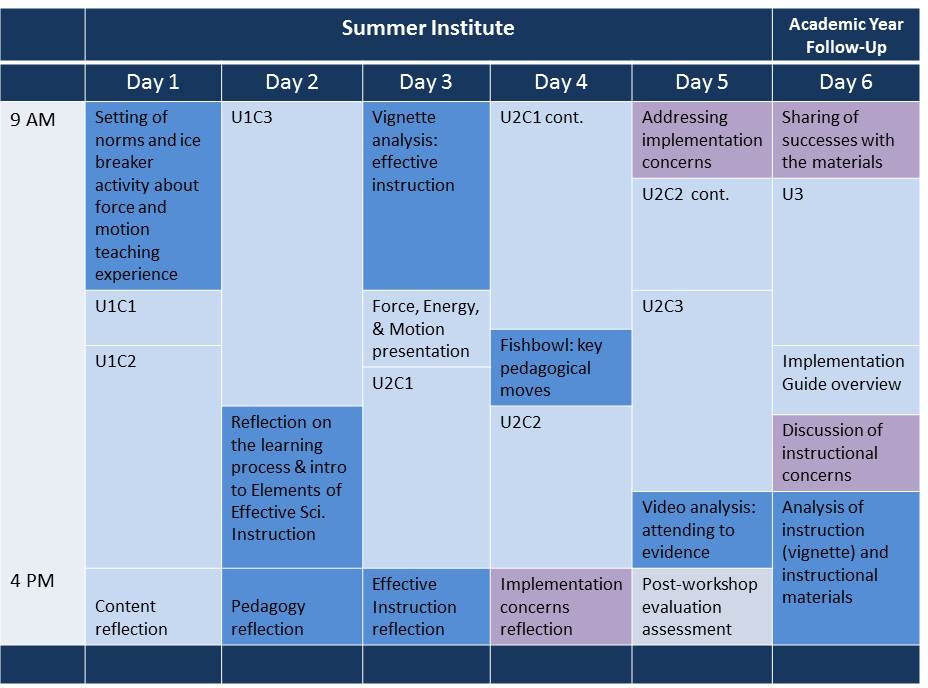Suggestions for the PD Agenda
In keeping with the first goal described in the Rationale and Goals section, we suggest devoting much of the PD time to engaging participants in investigations designed to deepen their content knowledge. These investigations are highlighted in light blue on the sample agenda shown below. Many of these investigations address ideas that are also student learning targets. Other content-centered activities (Unit 2 Cycle 3 and Unit 3) go beyond student learning targets to facilitate participants’ mastery of more advanced concepts likely to be helpful in teaching the student ideas. Participants also spend time examining the Force and Motion Content Framework to see how the investigations build on each other to gradually construct the “big” ideas.
In addition to deepening participants’ content knowledge, we consider it important to devote portions of the PD to help participants understand the learning theory-based pedagogy being used. These pedagogical activities are highlighted in dark blue on the sample agenda, and include smaller blocks of time to highlight findings about how people learn, engage in the fishbowl activity with the PD facilitator, complete daily individual reflections, and analyze the classroom vignette.
Finally, segments of time are set aside for development of the third goal of the PD program, to help deepen teachers’ understanding and familiarity with high-quality instructional materials. In addition to the activities intended to help participants understand the learning theory-based pedagogy (which also underlies the instructional materials), time is provided for participants to discuss concerns and suggestions relative to implementing the Force and Motion unit in their own classrooms (seen in purple on the sample agenda). A more detailed agenda is also available.
Although the time spent working on unit activities is marked with light blue on the agenda, it should be noted that by completing the AIM Force and Motion activities during the PD, participants are provided with opportunities to learn about pedagogy and high-quality instructional materials in addition to content.
We initially planned the AIM Force and Motion PD to take place during a 5-day summer institute (represented by Days 1–5 on the sample agenda). However, we found that teachers confused Newton’s Third Law (which is not addressed in the student materials) with the idea of “balanced forces” (which is addressed in the student materials). Teachers thought that when one object applies a force to a second object, and the second object applies a force of equal size and opposite magnitude to the first (the third law), the forces were “balanced.” We addressed this issue during an academic year session (Day 6 on the sample agenda) using Unit 3. At that time, the majority of the teachers in attendance had taught at least some of the AIM Force and Motion unit to their students, so we also provided them time to share their successes and concerns with using the materials. The session also included time for the teachers to apply what they had learned about effective science instruction by analyzing two classroom vignettes and determining which lesson was more likely to result in students understanding the science idea and evidence for the idea.
Next section
Back to the Professional Development Resources page

